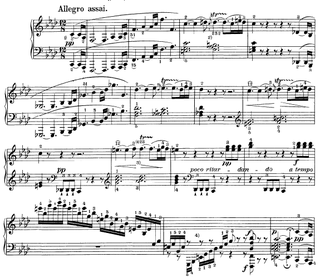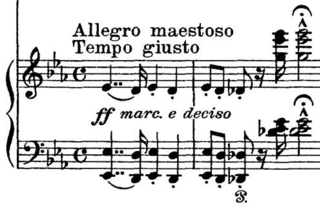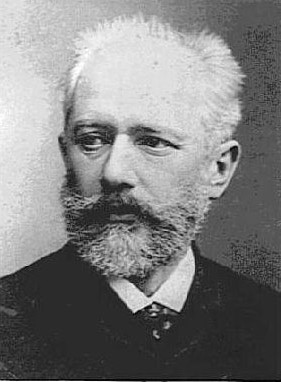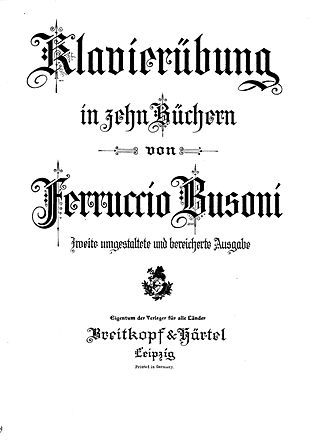The Hungarian Rhapsodies, S.244, R.106, are a set of 19 piano pieces based on Hungarian folk themes, composed by Franz Liszt during 1846–1853, and later in 1882 and 1885. Liszt also arranged versions for orchestra, piano duet and piano trio.

Ludwig van Beethoven's Piano Sonata No. 23 in F minor, Op. 57 is among the three famous piano sonatas of his middle period ; it was composed during 1804 and 1805, and perhaps 1806, and was dedicated to Count Franz von Brunswick. The first edition was published in February 1807 in Vienna.
Concerto in F is a composition by George Gershwin for solo piano and orchestra which is closer in form to a traditional concerto than his earlier jazz-influenced Rhapsody in Blue. It was written in 1925 on a commission from the conductor and director Walter Damrosch. It is just over half an hour long.

Franz Liszt composed his Piano Concerto No. 1 in E♭ major, S.124 over a 26-year period; the main themes date from 1830, while the final version is dated 1849. The concerto consists of four movements and lasts approximately 20 minutes. It premiered in Weimar on February 17, 1855, with Liszt at the piano and Hector Berlioz conducting.
The Grandes études de Paganini, S. 141, are a series of six études for the piano by Franz Liszt, revised in 1851 from an earlier version. It is almost exclusively in the final version that these pieces are played today.

Tchaikovsky's Serenade for Strings in C major, Op. 48, was composed in 1880. It was first performed October 30, 1881 in St. Petersburg at a Russian Musical Society concert conducted by Eduard Nápravník.

Hungarian Rhapsody No. 2 in C-sharp minor, S.244/2, is the second in a set of 19 Hungarian Rhapsodies by composer Franz Liszt, published in 1851, and is by far the most famous of the set.

Transcendental Étude No. 8 in C minor, "Wilde Jagd" is the eighth of twelve Transcendental Études by Franz Liszt.
The Piano Concerto No. 3 in D major, Op. 50 by Russian composer Dmitri Kabalevsky is one of three concertos written for and dedicated to young performers within the Soviet Union in 1952, and is sometimes performed as a student's first piano concerto. This sunny and tuneful piece manages to combine effective apparent pianistic pyrotechnics whilst keeping it within the range of ability of a keen student.
The three csárdás that Franz Liszt wrote in 1881–82 and 1884 are solo piano pieces based on the Hungarian dance form of the same name. Liszt treats the dance form itself much less freely than he did much earlier with the verbunkos in the Hungarian Rhapsodies, and the material itself remains more specifically Hungarian than gypsy in thematic material. Their spare lines, angular rhythms and advanced harmonies show these pieces to be direct ancestors of the compositions of Béla Bartók. Because of these attributes, the csárdás are considered by Liszt scholars among the more interesting of the composer's late output.
The Fantasia on Hungarian Folk Melodies, commonly known in short form simply as the Hungarian Fantasy, is Franz Liszt's arrangement for piano and orchestra of his Hungarian Rhapsody No. 14, originally for solo piano. The Fantasia was written in 1852 and premiered in Pest on June 1, 1853, with Hans von Bülow as soloist and Ferenc Erkel conducting the orchestra.

The Piano Quartet No. 1 in G minor, Op. 25, was composed by Johannes Brahms between 1856 and 1861. It was premiered in 1861 in Hamburg, with Clara Schumann at the piano. It was also played in Vienna on 16 November 1862, with Brahms himself at the piano supported by members of the Hellmesberger Quartet. Like most piano quartets, it is scored for piano, violin, viola, and cello.

The Klavierübung, by the Italian pianist-composer Ferruccio Busoni, is a compilation of piano exercises and practice pieces, comprising transcriptions of works by other composers and original compositions of his own.

Hungarian Rhapsody No. 19 (S.244/19) in D minor is the last of a set of 19 Hungarian Rhapsodies by the Hungarian composer Franz Liszt. It was written in 1885.
Hungarian Rhapsody No. 10 in E major, S.244/10, is a composition for solo piano by Franz Liszt. It is tenth in the set of his Hungarian Rhapsodies, and is subtitled Preludio, although this name is not commonly used. It, along with the rest of the first fifteen rhapsodies, were published in 1853.
Hungarian Rhapsody No. 4, S.244/4, in E-flat major, is the fourth in a set of nineteen Hungarian Rhapsodies composed by Franz Liszt for solo piano. It was composed in 1847 and published in 1853.
Hungarian Rhapsody No. 13, S.244/13, in A minor, is the thirteenth Hungarian Rhapsody by Franz Liszt. One of the lesser performed works of Liszt, the friska section starts with a theme used by the well-known Allegro molto vivace from Zigeunerweisen by Pablo de Sarasate. At the end, it quotes the authentic Hungarian folk song Nem, nem, nem, nem megyünk mi innen el.
Hungarian Rhapsody No. 14, S.244/14, in F minor, is the fourteenth Hungarian Rhapsody by Franz Liszt. The Hungarian Fantasy, written in 1852, is an arrangement of the rhapsody for piano and orchestra. An average performance of the piece lasts about twelve minutes. It begins with a very subtle intro, with low octaves tremolos, which develop from F-Minor to C-Minor then to E♭-Major. After which Liszt introduces a new theme which he variates for around 100 bars in every way possible. He then subtly writes a new theme, the "Allegro alla Zingarese". He then reuses the 2nd theme to end the 3rd and places a short cadenza between the incredible introduction. After that, he finally brings up the finale of this rhapsody, which lasts around 100 bars before descending into a presto, and a fortissimo with a very subtle, yet still amazing F-Major ending.
Hungarian Rhapsody No. 16, S.244/16, in A minor is the sixteenth Hungarian Rhapsody composed by Franz Liszt for solo piano. It was composed and published in 1882. The rhapsody, subtitled Budapest Munkácsy-Festlichkeiten, has a duration of approximately five minutes and is dedicated to Mihály Munkácsy. It was arranged for piano four-hands by the composer himself, marked as S.622, published in the same year. The piece begins with an outset of the main theme, A Minor, but with a distinct ambiguity of tonality. This section ends with a cadenza. The following section introduces a new theme, marked Lassan Langsam, and also ends with a cadenza. The third section is a repeat of the second section, but transposed to B-flat Minor. The fourth section of the piece repeats the theme from the first section and segues to the Friska of the piece, marked Allegro con Brio. This introduces the parallel major to A Minor as the tonic and continues with lively variations on the first theme. The piece concludes with octaves ascending the keyboard in A Major arpeggios and is finished on four final A Major chords.

The Impromptus, Op. 90, D. 899, are a set of four impromptus for solo piano composed by Franz Schubert in 1827. They were written in the same year as the Impromptus, Op. 142, though only the first two pieces were published during Schubert's lifetime. Together with the latter set, they have become a cornerstone of the piano repertoire.









